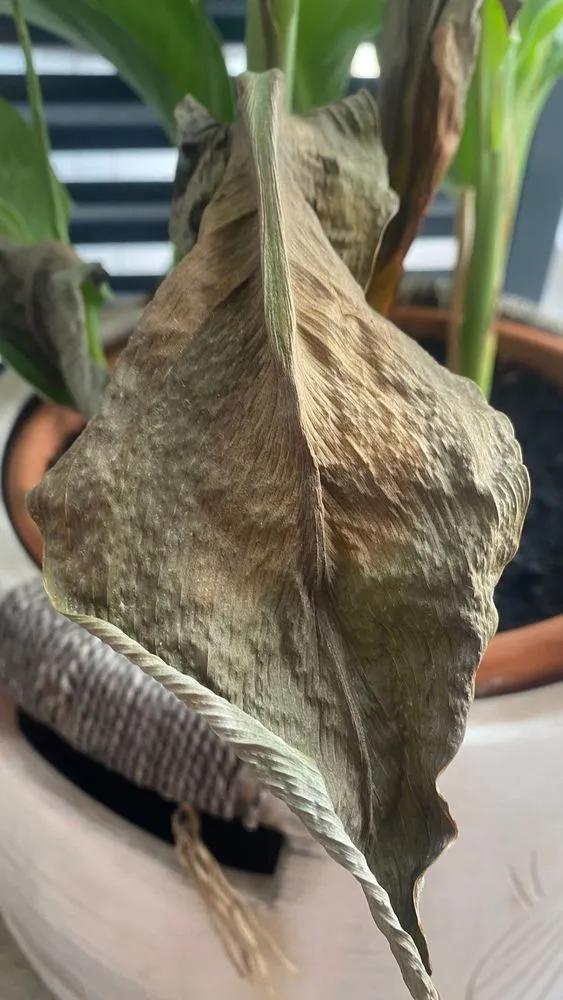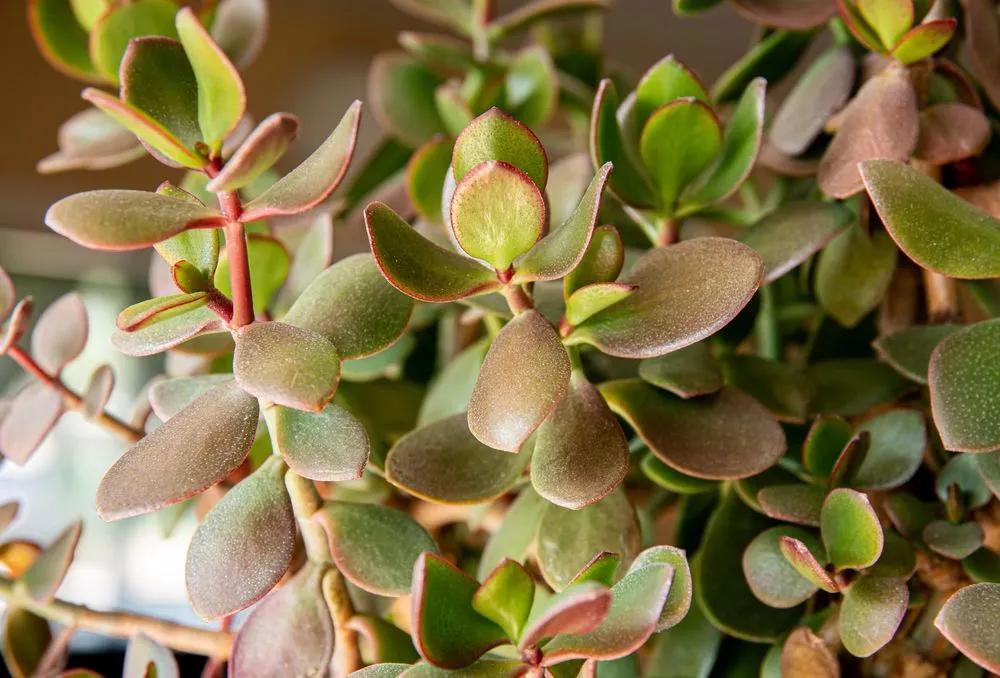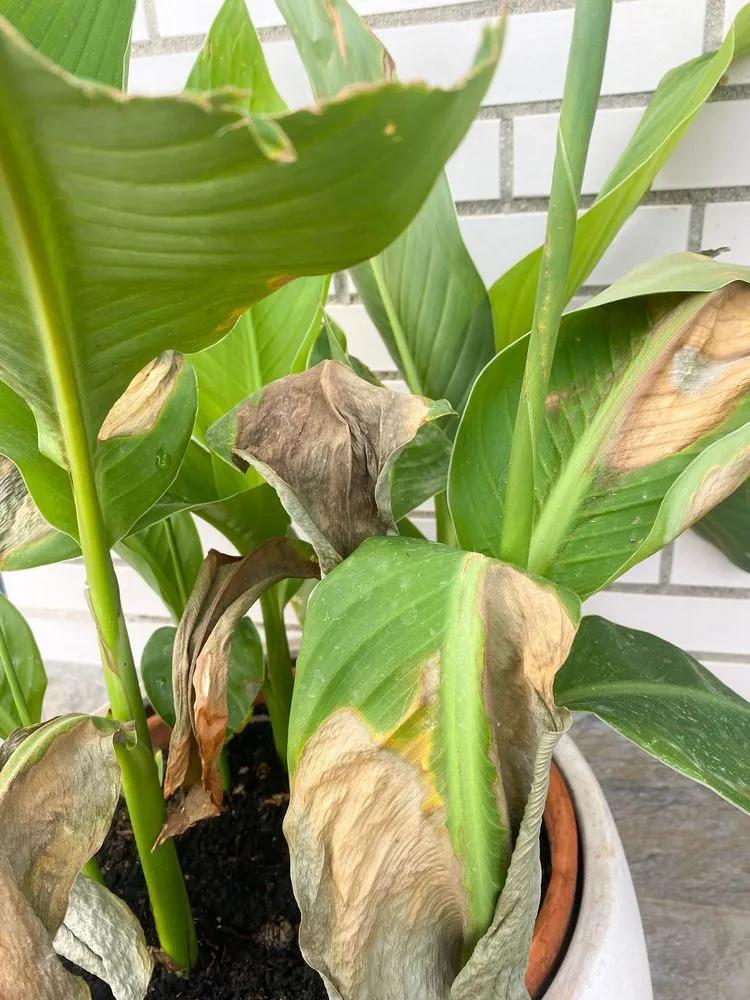When the light exposure level is too intense for a particular plant, the chlorophyll begins to break down. The symptoms are even more severe if the dry soil accompanies inadequate lighting conditions.
Light excess



Signs of damage
- Chlorosis. Since excessive light breaks down chlorophyll, the green pigment, you can notice leaf yellowing.
- Droopy leaves. A dry plant does not have enough strength and energy to stand still.
- Brown tips. The more light a houseplant receives, the more water it needs. If the water quantities do not satisfy the plant's needs, leaf edges are the first ones to take the hit.
- Foliage distortion. The leaves are covered with bleached, pale, or faded areas.
- Stunted growth. Too much sunlight impedes plant growth. The greenery is too weak to develop and function properly.
How to prevent
Different plants can have different light requirements: low, medium, or high. According to this aspect, each plant has its preferable duration of sunlight exposure and light intensity level.
The intensity depends on the distance between the plant and the light source.
Choose a spot according to your houseplant's needs. If your green pet requires full direct sun to thrive, put it in a south-facing window. If low light is required, choose a windowsill facing north.
Heal
- First, you must take your plant away from the light source.
- Fill a bowl with about 3-4 in (7-10 cm) of room temperature water. Ensure your plant's container has drainage holes, and soak your houseplant.
- Allow the plant to absorb all the liquid it needs through the drainage system. Come back in about 45-60 minutes.
- Feel if the top 2-3 in (5-7 cm) of the potting mix are saturated with water. If not, irrigate the plant slightly from the top.
- When the growing medium is evenly damp, drain the kitchen sink. Give your plant some more time to get rid of the excess liquid.
- We also recommend increasing the humidity level by using a room humidifier.
Go Premium to continue reading
Also you’ll get unlimited access to disease identification and all the other beneficial features
More problems
